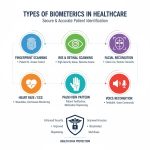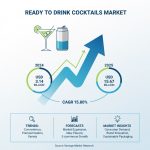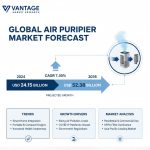Autologous fat grafting (AFG), a cutting-edge cosmetic surgery technique, is increasingly gaining traction worldwide as a natural and effective solution for aesthetic enhancements. This minimally invasive procedure involves the removal of fat from one part of the body and its reinjection into areas that require volume restoration or contour enhancement. Whether used for facial rejuvenation, breast augmentation, or body contouring, autologous fat grafting is becoming a preferred option for many patients seeking a more natural look with reduced risks compared to synthetic implants. As the demand for non-surgical aesthetic treatments continues to rise globally, the autologous fat grafting market is experiencing significant growth.
To understand more about Autologous Fat Grafting market– Click for Download a FREE Sample Report in minutes!

What Is Autologous Fat Grafting?
Autologous fat grafting, also known as fat transfer, is a surgical procedure that involves the extraction of fat from a donor area, such as the abdomen or thighs, followed by its purification and reinjection into areas of the body that need volume restoration or contour enhancement. The fat harvested is the patient’s own, which eliminates the risk of allergic reactions or rejection that may occur with synthetic implants or foreign substances.
Common applications of autologous fat grafting include:
- Facial rejuvenation: Restoring volume to areas like the cheeks, under-eye hollows, and temples.
- Breast augmentation: Enhancing breast size or reconstructing the breast after a mastectomy.
- Body contouring: Sculpting areas like the abdomen, buttocks, and thighs.
- Hand rejuvenation: Reducing the appearance of prominent veins and thin skin on the hands.
The procedure has gained significant popularity due to its natural results, minimal invasiveness, and the use of a patient’s own tissue, making it a safer option compared to other procedures like implants.
Key Trends Driving the Growth of the Autologous Fat Grafting Market
Several key trends are contributing to the rapid expansion of the autologous fat grafting market globally. These trends reflect the increasing demand for natural, minimally invasive treatments and the evolution of fat grafting technology.
Rising Demand for Non-Surgical Aesthetic Treatments
One of the main drivers of the market is the growing consumer preference for non-surgical aesthetic procedures. Traditional surgical options such as facelifts, breast augmentation with implants, and liposuction are becoming less popular as patients increasingly seek procedures with less downtime and fewer risks. Autologous fat grafting provides a safer, more natural alternative, making it an attractive option for people looking for subtle, long-lasting enhancements without the need for large incisions or artificial implants.
The rising awareness of minimally invasive cosmetic treatments and their benefits, combined with improved accessibility and affordability, is fueling the demand for fat grafting procedures globally.
Technological Advancements in Fat Harvesting and Purification
Advancements in fat harvesting and purification technologies are making autologous fat grafting more efficient and effective. New techniques in liposuction have enabled surgeons to extract larger volumes of fat while minimizing trauma to the tissue, resulting in better graft retention and faster recovery times for patients. Additionally, improved purification methods ensure that only healthy, viable fat cells are used, leading to higher success rates and longer-lasting results.
With continued technological innovations, autologous fat grafting is becoming more accessible to a broader population, contributing to the overall market growth.
Growing Focus on Natural Aesthetic Results
In recent years, there has been a significant shift towards natural aesthetic results in the cosmetic surgery industry. Patients are increasingly interested in enhancing their appearance without the use of foreign substances like silicone implants or artificial fillers. Autologous fat grafting provides a natural solution, as it uses the patient’s own fat to restore volume and create more harmonious, lifelike outcomes.
This preference for natural enhancements is not only driving demand in the aesthetic sector but also contributing to the growth of fat grafting in medical applications such as post-mastectomy reconstruction and wound healing.
Growing Popularity of Body Contouring Procedures
The popularity of body contouring treatments, such as the Brazilian butt lift (BBL), has surged in recent years, further driving the demand for fat transfer procedures. Autologous fat grafting allows patients to achieve a fuller, more sculpted physique by redistributing fat from areas with excess fat to areas that require volume enhancement, such as the buttocks, breasts, or face. This combination of liposuction and fat transfer offers dual benefits: it contours the body and restores volume, providing patients with a more youthful and balanced appearance.
The increasing interest in non-invasive body sculpting procedures is expected to continue propelling the growth of the autologous fat grafting market.
Social Media Influence and Rising Celebrity Endorsements
Social media platforms, particularly Instagram, YouTube, and TikTok, have played a significant role in influencing public interest in aesthetic procedures. Many influencers and celebrities openly share their experiences with fat transfer procedures, promoting them as an effective way to achieve a more natural, youthful look. This exposure has helped demystify autologous fat grafting and has increased its popularity, particularly among younger demographics who are more active on social media.
Celebrity endorsements and social media trends are expected to continue boosting consumer awareness and driving demand for fat grafting procedures worldwide.
Regional Growth Analysis of the Autologous Fat Grafting Market
The autologous fat grafting market is experiencing growth across various regions, with specific market dynamics influencing each region’s adoption rate. Understanding these regional trends can help stakeholders identify high-growth areas and develop targeted strategies.
North America: Market Leader with Strong Demand for Aesthetic Enhancements
North America is the largest market for autologous fat grafting, driven by the high demand for cosmetic and reconstructive procedures. The United States in particular has seen a surge in fat transfer procedures, particularly in facial rejuvenation, breast augmentation, and body contouring. The availability of advanced technology, the presence of skilled surgeons, and the high disposable income of consumers are key factors propelling the market growth in this region.
In addition, the aging population in North America is contributing to the demand for facial fat grafting procedures to restore lost volume and reduce the appearance of wrinkles. As more individuals look for natural alternatives to surgery, fat grafting is becoming the go-to option for facial and body enhancements.
Europe: Increasing Adoption of Fat Grafting in Aesthetic Medicine
Europe is another significant market for autologous fat grafting, with countries like Germany, France, and the UK seeing growing demand for fat transfer procedures. Europe’s aesthetic medicine market is becoming increasingly focused on minimally invasive techniques, and fat grafting offers a safe, effective solution. The rise in the popularity of procedures such as the Brazilian butt lift (BBL) and facial fat injections is boosting the market.
Additionally, medical tourism is contributing to market growth in countries like Turkey and Spain, where patients from neighboring regions travel for affordable fat grafting procedures.
Asia Pacific: A Fast-Growing Market with Increasing Awareness
The Asia Pacific region is witnessing rapid growth in the autologous fat grafting market, driven by increasing disposable incomes, greater access to healthcare, and a growing awareness of aesthetic treatments. Countries like South Korea, Japan, and India are seeing a rise in demand for fat transfer procedures, particularly for facial rejuvenation and body contouring.
In South Korea, the trend of achieving natural beauty and youthful appearance has fueled the demand for fat grafting, especially for procedures like cheek augmentation and under-eye fat transfer. As Asian consumers become more health-conscious and beauty-conscious, the market for fat transfer procedures is expected to continue expanding in this region.
Latin America: Increasing Popularity of Aesthetic Treatments
Latin America is experiencing growth in the autologous fat grafting market, especially in countries like Brazil and Mexico, which are known for their medical tourism industry. Brazil is one of the largest consumers of Brazilian butt lift (BBL) procedures, which use fat transfer to enhance buttocks and body contours. The growing acceptance of cosmetic surgery in Latin America, coupled with the availability of skilled surgeons and relatively affordable pricing, is driving the demand for fat grafting procedures in the region.
Middle East and Africa: Emerging Market with Increasing Demand for Aesthetic Enhancements
The Middle East and Africa region is an emerging market for autologous fat grafting, particularly in countries like the United Arab Emirates and Saudi Arabia, where demand for luxury aesthetic procedures is on the rise. Fat grafting procedures are increasingly being sought by individuals looking for non-invasive ways to achieve youthful and aesthetically pleasing results. The popularity of non-surgical cosmetic treatments among high-net-worth individuals in the Middle East is expected to contribute to market growth.
Challenges Facing the Autologous Fat Grafting Market
Despite its growing popularity, the autologous fat grafting market faces several challenges that could hinder its growth. These challenges include:
Limited Awareness in Developing Regions
While fat transfer procedures are gaining popularity in developed regions, awareness remains limited in many developing countries. Autologous fat grafting is still considered a niche procedure in these markets, and its adoption is slow due to lack of awareness, limited access to trained professionals, and high procedure costs.
Risks and Complications
Like any medical procedure, autologous fat grafting carries certain risks, including fat absorption, infection, and the potential for uneven results. These complications can deter some potential patients from opting for the procedure, which may slow market growth in certain regions.
High Costs of Procedures
Although fat transfer offers long-lasting results, the high cost of the procedure, particularly in developed markets, can limit its accessibility. The cost of liposuction, purification, and injection techniques can be prohibitive for some patients, especially when compared to alternative procedures like fillers or implants.
For comprehensive forecast and historic data on regions, market segments, customer landscape, and companies- Click for the snapshot of Autologous Fat Grafting Industry Report
Conclusion
The autologous fat grafting market is poised for significant growth, driven by the increasing demand for natural, minimally invasive cosmetic treatments. As technological advancements improve the effectiveness of fat transfer procedures and patient awareness continues to rise, the market is expected to expand across both developed and emerging regions.
While challenges such as high costs and limited awareness in some regions exist, the overall outlook for the market is positive, with significant opportunities for industry players to capitalize on this growing trend. By staying ahead of technological advancements, addressing patient concerns, and expanding access to fat grafting procedures, the market for autologous fat grafting is set to thrive in the coming years.
See the comprehensive Autologous Fat Grafting Market study by Vantage Market Research for a thorough examination of industry projections, major players, and geographical trends.
![[Market Research Reports] – Research Google News Blog | VMR.Biz](https://www.vmr.biz/wp-content/uploads/2022/12/logo-removebg-preview.png)











